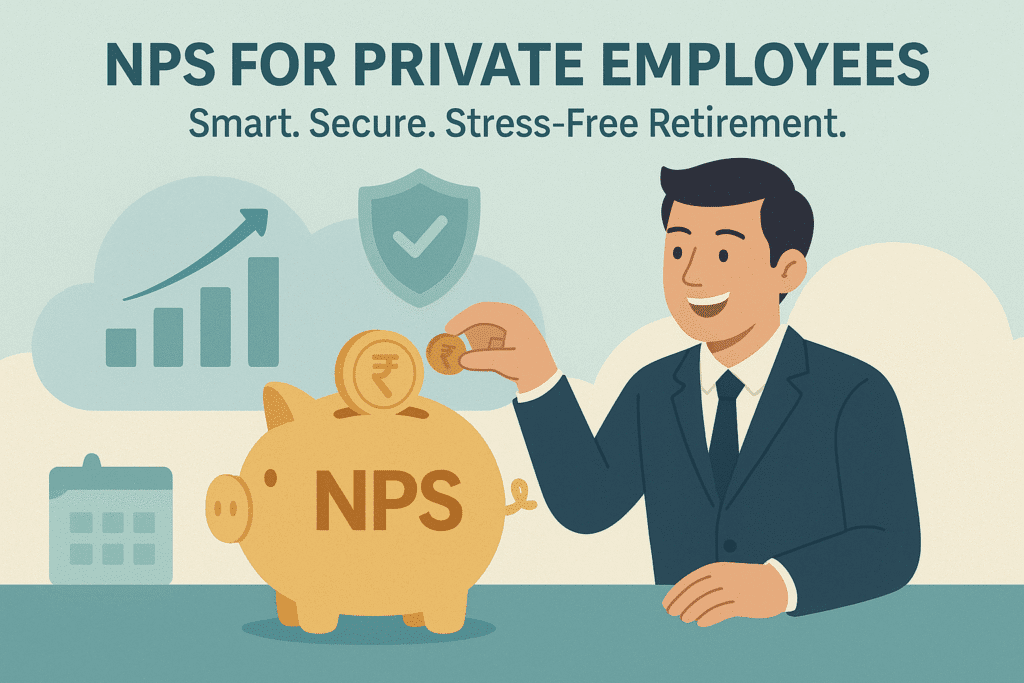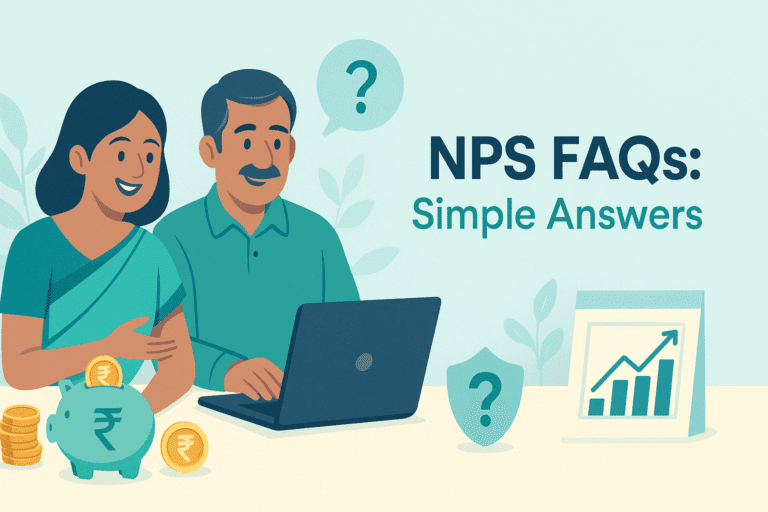NPS for private employees: Build wealth & save tax smartly

If you’re working in the private sector and looking for a safe way to build retirement fund, then understanding the NPS for private employees can be a game changer. The national pension system (NPS) is not just for government workers. It’s open to all Indian citizens, including private employees and offers great benefits for long term savings and tax planning.
Why Should Private Employees Consider NPS?
The national pension system (NPS) is a government backed retirement savings scheme. It allows you to invest regularly during your working years and build a significant fund for your retirement life. Managed by the pension fund regulatory and development authority (PFRDA), NPS is designed to offer low-cost, market-linked returns and disciplined long-term savings.
If you are a private employee, NPS is completely voluntary but opting in early can give you decades of compounding benefits & tax savings.
Who Can Join NPS from the Private Sector?
Anyone who is a citizen of India, aged 18 to 70 years can open an NPS account. This includes salaried employees in private companies, freelancers and also self employed individuals.
You can open an NPS account online through eNPS or offline via banks and post offices.
Contribution Rules for Private Employees
You can invest in NPS in two main ways:
1. As an Individual
You decide how much and how often to invest. There’s no fixed monthly requirement.
- Minimum contribution: ₹1,000 per year
- No upper limit
2. Through Employer (Corporate NPS Model)
If your company is registered with NPS, they can contribute to your account as part of your CTC.
- You and your employer can each contribute up to 10% of your salary (Basic + DA)
This employer-employee setup gives you extra tax benefits and automatic savings each month.
Tax Benefits for Private Employees Under NPS
Here’s where NPS really shines—tax savings. As a private employee, you can claim deductions under the following:
Section 80CCD(1):
Part of the ₹1.5 lakh limit under Section 80C
(Max 10% of salary or ₹1.5 lakh combined with other investments)
Section 80CCD(1B):
Additional deduction of ₹50,000 exclusively for NPS.
(This is over and above the 80C limit)
Section 80CCD(2):
If your employer contributes to your NPS account, it’s deductible up to 10% of salary, and there’s no ₹1.5 lakh cap here!
That means you can save ₹2 lakh or more in taxes every year if you structure it smartly.
Where Does the NPS Money Go?
Your contributions are invested in:
- Equity (E) – For long-term growth
- Corporate Bonds (C) – For steady income
- Government Securities (G) – For safety
- Alternative Assets (A) – Limited exposure to REITs/InvITs
You can choose between two investment options:
- Active Choice – You decide the percentage allocation
- Auto Choice – Allocation adjusts with your age (less risky as you grow older)
You also get to select from multiple Pension Fund Managers like HDFC, SBI, ICICI, UTI, etc.
What Returns Can Private Employees Expect from NPS?
NPS offers market-linked returns, which are generally higher than traditional savings tools like PPF or FDs. On average:
- 8% to 10% annual returns (historical range)
- Low fund management charges (~0.01%) means more money stays invested
Over 20–30 years, this can build a large retirement fund thanks to compounding.
Withdrawal Rules: What Happens at Retirement?
When you turn 60, you can:
- Withdraw 60% of your NPS corpus as a lump sum – tax-free
- Use 40% to buy an annuity (monthly pension) – this part is taxable
You can also:
- Delay withdrawal till age 75
- Start a Systematic Withdrawal Plan (SWP) for more flexibility
What If You Want to Exit NPS Early?
You can exit NPS before retirement, but with a few conditions:
- If exiting before 60, you can withdraw 20%, and 80% must go to annuity
- Partial withdrawals (up to 25%) allowed after 3 years for:
- Medical emergencies
- Higher education or marriage of children
- Buying or building a home
- Medical emergencies
NPS is designed for long-term commitment, so early exits come with restrictions to keep your future secure.
NPS vs Other Investment Options for Private Employees
| Feature | NPS | PPF | EPF | Mutual Funds |
| Returns | 8–10% (market-linked) | 7–8% | 8.15% approx | Varies (8–15%) |
| Tax Benefits | ₹2 lakh+ | ₹1.5 lakh | ₹1.5 lakh | ₹1.5 lakh (ELSS) |
| Lock-in Period | Till 60 (partial exit allowed) | 15 years | Till retirement | 3 years (ELSS) |
| Withdrawal Rules | Limited before 60 | Full after 15 yrs | Partial allowed | Flexible |
| Risk Level | Moderate (diversified) | Low | Low | Medium–High |
NPS offers the best of both worlds—tax saving + long-term growth + retirement security.
Final Thoughts: Should Private Employees Invest in NPS?
If you want to:
- Build a solid retirement fund
- Reduce your taxable income every year
- Benefit from low-cost, professionally managed investments
- Stay invested in a disciplined and long-term way
…then NPS is a must-have in your portfolio.
Even if your employer doesn’t offer it, you can open an NPS account yourself in minutes and start small. Over time, consistent contributions—even ₹1,000 a month—can grow into a meaningful amount for your future. Start today. Your future self will thank you and if your employer offers NPS under the corporate model opt in without a second thought.
Other NPS related posts:
National Pension System (NPS) FAQs: Simple Answers
NPS Tax Benefits Explained: Save Up to ₹2 Lakh with India’s Top Retirement Scheme





